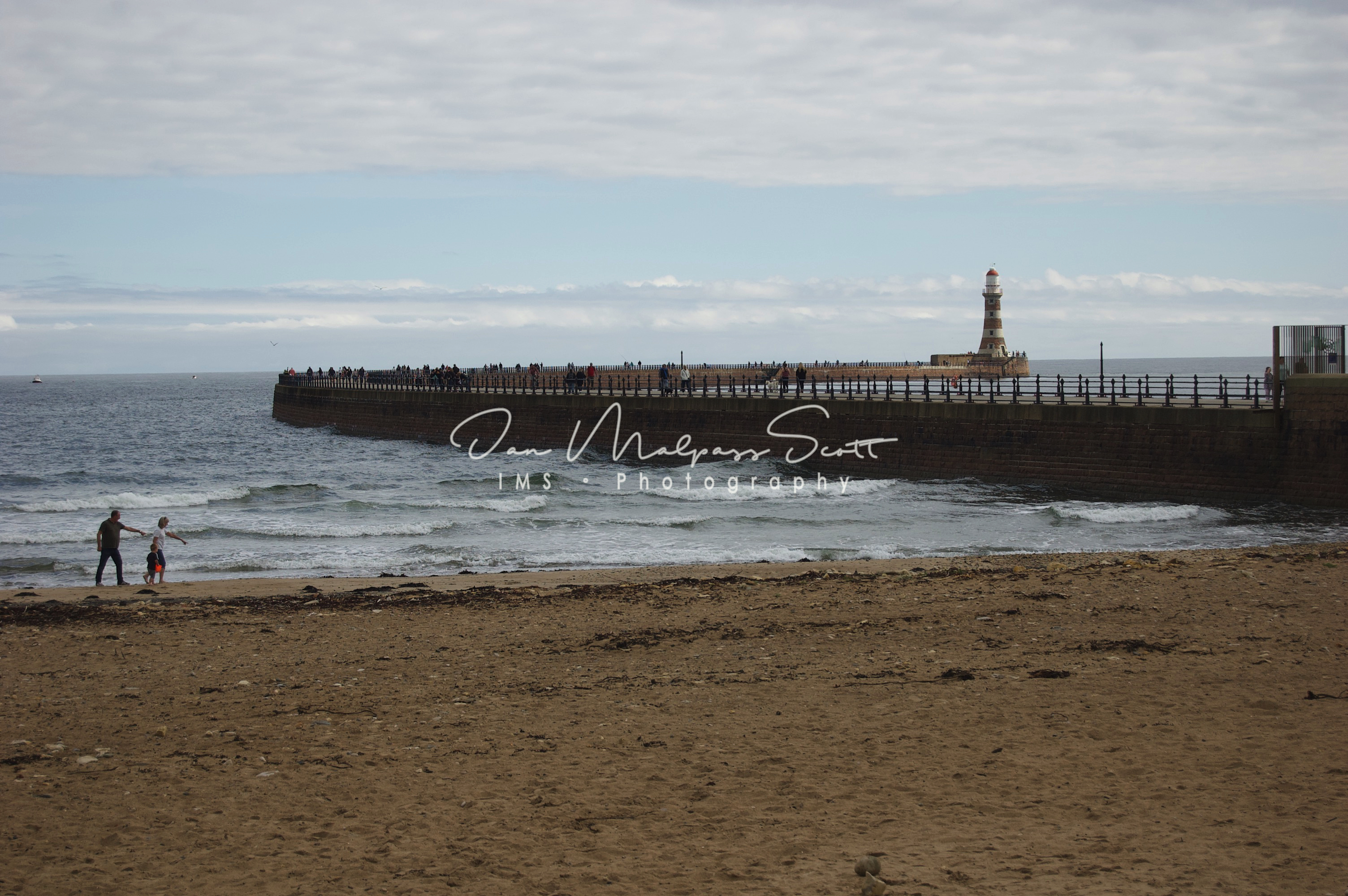![]()
Roker Pier, Roker, Sunderland
From 1717 the newly formed River Wear Commission began to improve the harbour entrance at the mouth of the Wear. By 1750 a pair of breakwaters had been built (which survive in truncated form as the ‘Old’ North and South Piers).
By the beginning of the next century each had a lighthouse at its end. (The lighthouse which stands today in Roker Cliff Park originally stood on the Old South Pier; it was deactivated in 1903 and removed eighty years later.)
With the growth of Sunderland as a port, it was decided to improve the approach to the river by creating an outer harbour, protected by a new pair of new breakwaters curving out into the North Sea from the shore on each side. The new piers were the brainchild of Henry Hay Wake, who at the age of 25 had been appointed Chief Engineer to the River Wear Commission (in succession to Thomas Meik) in 1868.[4] The foundation stone for the New North Pier (Roker Pier) was laid on 14 September 1885. Applauded at the time as a triumph of engineering, the 1,198 ft (365 m) pier is built of granite-faced concrete blocks, which were loaded onto wagons at River Weir Works by a Goliath crane and unloaded and placed at the end of the pier by a Titan crane.
The opposite ‘New South Pier’ was begun at around the same time but never fully completed due to the start of the First World War; the twin lighthouse planned for its end was never built.


